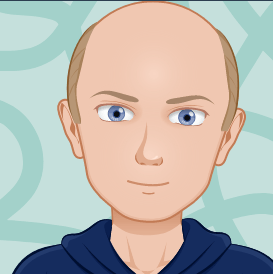
Sparsely and thoughtfully written, a joy for the eyes and ears, and a gentle gem of a world to explore: “Sable” is a low-stakes, meditative game I didn’t know I needed.
About the game
You are Sable – a young girl who is preparing to leave her home and embark on a ritual journey of discovery. The world around you suits your name well (French for “sand”) – it’s a desert landscape, albeit with lots of variety. Once you find your bearings, say your goodbyes, and get your hoverbike in order, it’s all go: you leave the camp, and set off to find things out. This is your quest, and you are your own biggest puzzle.
The other quests and puzzles come your way frequently enough. Each town, oasis, ruin and camp has plenty of secrets to discover or folks to talk to. Some will help you out, some want to be helped in turn. The epilogue to this succession of adventures – if you care about finishing the game – will also mean that Sable’s big questions get some answers, and that her journey of discovery concludes.
But here’s the thing. You don’t need to finish the game so soon… maybe not at all. Sable’s world is vast and fascinating. The landscapes remind me of François Schuiten’s work, and are enough to bring me back again and again. The places you visit will look different throughout the day. And the soundtrack will make exploring them intriguing and soothing.
“Sable” won’t break your heart by killing off your protagonist – or anyone, for that matter. Instead, it will give you a world you can glide across, deserts you can ride through, and vistas worth finding.
About what it taught me
I played “Sable” right after “Stray”, a great game I’ll come back to soon – but I enjoyed being in Sable’s world a bit more. Much of this was thanks to the combination of the game’s visual and musical appeal with its low-stakes exploration philosophy. I revelled in the fact that things can’t make Sable die – I enjoyed the freedom to give up on a quest and go on a hoverbike joyride. And I was looking forward to choosing my own ending, my own definition of what “success” means in the game.
I learned that this is what relaxes me: a world where I feel safe and encouraged to explore, a world where my hoverbike can trace a new creative path and lead me to new sights and sounds.
On a storytelling level, I learned another good thing from “Sable”. I can’t speak about this too much without spoiling some storylines, so here’s the low-down: it’s possible to have a diverse representation without over-scripting and overwhelming. It’s possible for a sparse world to be thoughtful, inclusive, and to gently challenge any stereotypical assumptions you came in with. Achieving this without hours of dialogue – and with no voiceover – was remarkable, and I felt that “Sable” managed to write itself in a refreshing way.
Not just me?
The concept of “low-stakes failure” has seen some popularity and discussion in education. Many folks focused on fear of failure, and ways of coping – both in learning and broader in psychology. Much of this debate, though, still remains trapped in a teleology of sorts, grasping for its own redemption arc: even the best low-stakes environments are seen as something we ultimately leave behind to ace that test, reach that peak performance, achieve that goal and face the fear of failure. I’ve yet to find a concerted, conscious attempt to build and maintain such low-stakes environments, for learners and employees of all ages – and to understand the benefits of exploring them on a regular, lifelong basis.
What it will cost you
“Sable” works on Windows, Xbox, and PlayStation 5. I played the Steam version on PC. It retails for $24.99 but is often discounted. On PC, you don’t need any special equipment to play it.
Book pairing
If Deleuze and Guattari’s “Nomadology: The War Machine” was able to take itself ten times less seriously, it would be this game. “Tracing creative lines of escape” made more and more sense with each hoverbike ride. If you can’t stand these two French authors, have another one: “The Little Prince” is a young person’s valuable reminder of all that we find, and lose, on each of our journeys.
Music pairing
The soundtrack, by Japanese Breakfast, is lovely and works well outside of the game, too. Where to take it next? For more cheerful explorations, possibly Pat Metheny’s “Secret Story” – and for something more grown up and darker, definitely Joni Mitchell’s “Hejira”.
What else to play
“Journey” is an obvious candidate for more mystic desert quest vibes. “Firewatch” struck me as similarly paced in many ways, but darker and hitting closer to home. For much more open-world vastness, maybe “No Man’s Sky”?
This post is part of “100 games, and what they taught me” – a series of short essays about the games I play and the things I learn from them.
(Photo by Alex Azabache on Unsplash)

I am an editor, author, translator and teacher based in the UK.
I am always looking to get involved in new projects. My areas of expertise:
ELT publishing – print and digital
Language learning
Translation – POL-ENG-POL, non-fiction
Editorial project management
Does it look like we could work together? Download my CV or get in touch via e-mail.